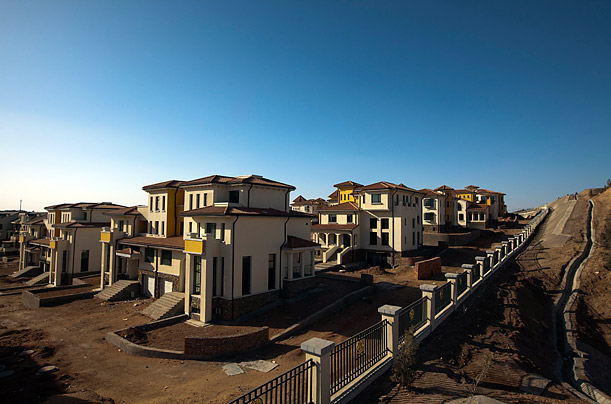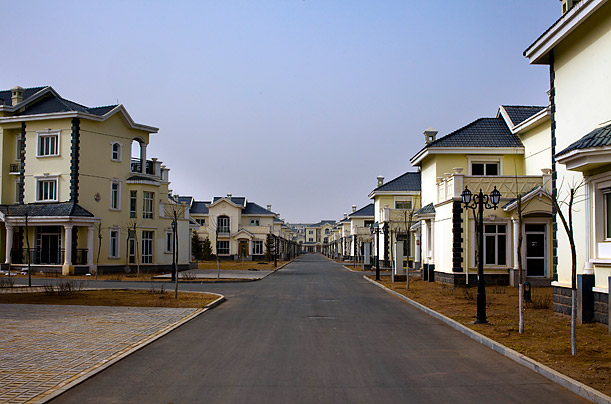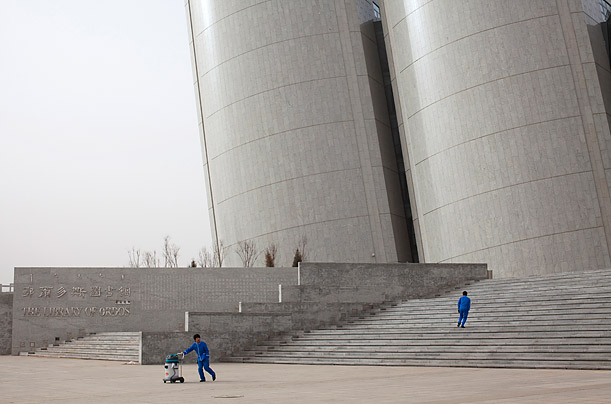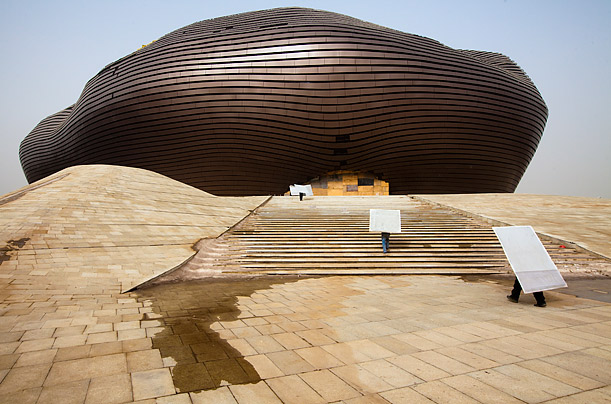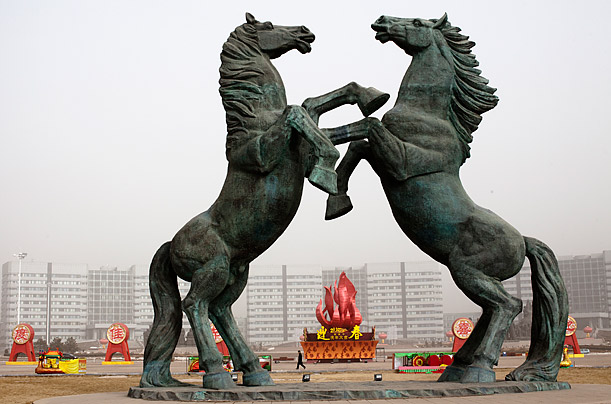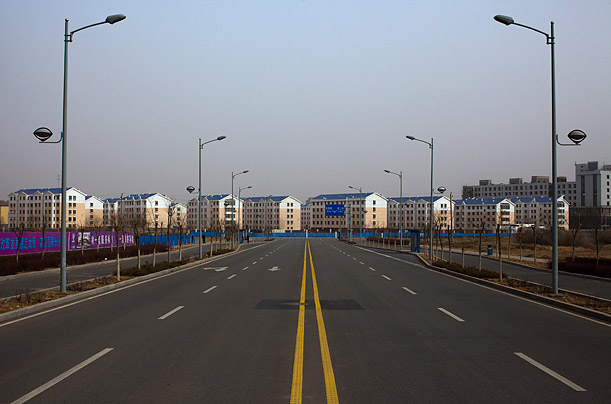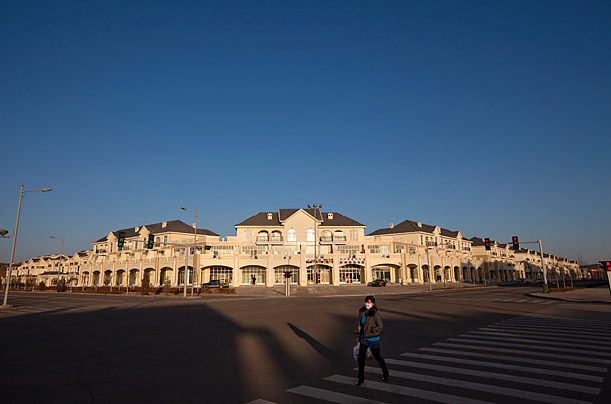chiyi 寫:時代雜誌攝影專欄/中國鄂爾多斯康巴什新區:—個現代化的城市廢墟
哈哈,基義老師的翻譯相當客氣哪!
原文標題「Ordos, China: A Modern
Ghost Town」根本就是把這裡當成
鬼城了。
話說回來,中國政府一旦拿出魄力來,要一個月內把那個城鎮填滿人,絕對沒問題!
我也來用功一下好了。
關於「鄂爾多斯Ordos」
鄂爾多斯位於內蒙古自治區西南部,南臨古長城與晉、陝、寧三省區毗鄰,西、北、東三面黃河環繞,與呼和浩特市和包頭市構成內蒙古最具活力的「金三角」。鄂爾多斯東部為丘陵山區,西部為波狀高原,中部為毛烏素和庫布其兩大沙漠,北部為黃河沖積平原,其中沙漠和山區、高原各佔總面積的48%。平均海拔在 1000—1500米間,年平均氣溫5.3—8.7攝氏度,年降水量小且集中,為170—350mm,屬典型的溫帶大陸性氣候。
鄂爾多斯雖然地形起伏不平,地貌複雜多樣,但是交通十分便捷,周邊和境內有京包(北京—包頭)、包蘭(包頭—蘭州)、包西(包頭—西安)三條鐵路幹線,109、210兩條高速公路貫穿全市,鄂爾多斯機場與周邊的五大民航機場形成了便捷的區域航空網絡。全市總面積8.7萬平方公里,總人口154.8萬人,其中蒙古族17萬人。全市下設七旗一區(伊金霍洛旗、達拉特旗、杭錦旗、准格爾旗、烏審旗、鄂托克旗、鄂托克前旗、東勝區),是一個以蒙古族為主體,漢族佔多數的地級市。
市府所在地康巴什新區是於2004年5月開始全面動工興建、2006年7月31日正式投入使用的,是全市政治、文化、金融、科研教育中心和技術產業基地。
轉貼基義老師所講的那堆相片的原文,來自
TIME
Ghost City
By Bill Powell Monday, Apr. 05, 2010
No question keeps more economists, investors, hedge-fund managers and bankers up at night than this one: Is China's property market a bubble?
The reason for their angst is clear: A property meltdown in China would imperil the whole world's fledgling economic recovery. Throughout the most severe global downturn in decades, China's economic growth has remained remarkably buoyant. This year, for example, China's GDP will likely rise 9% or more, in contrast to a merely subpar rebound in the U.S. and Europe.
And nothing has driven China's growth more than real estate investment. Last year, fixed-asset investment accounted for more than 90% of China's overall growth, and residential and commercial real estate investment made up nearly a quarter of that.
For years, regional governments across China have been building massive real estate projects that have attracted both private and corporate buyers. As prices have continued to rise (residential values in 70 large and medium-size cities across China soared in 2009, according to real estate consultancy Colliers International), more investors have become speculators, buying brand-new properties with the sole intention of flipping them.
But since a huge real estate bust in the U.S. in 2008 was the catalyst for the still lingering global recession, many analysts fear a replay in China could prove disastrous.
Indeed, evidence of property oversupply is everywhere. In Beijing, vast swaths of commercial space sit vacant — including floors of retail space right next to the iconic Water Cube, the 2008 Olympics swimming venue.
But throughout the Chinese interior, there are even eerier monuments to an as yet unrealized optimism: entire cities built for millions of inhabitants that stand all but empty.
Perhaps the most stark ghost city is Kangbashi, in Inner Mongolia. Built in just five years, Kangbashi was designed to be the showcase urban center of Ordos City, a relatively wealthy coal-mining hub that's home to 1.5 million people. A public-works project worthy of Kubla Khan's "stately pleasure-dome," Kangbashi is filled with office towers, administrative centers, government buildings, museums, theaters and sports fields — not to mention acre on acre of subdivisions overflowing with middle-class duplexes and bungalows. The only problem: the district was originally designed to house, support and entertain 1 million people, yet hardly anyone lives there. Only a handful of cars drive down Kangbashi's multilane highways, a few government offices are open during the day and an occasional pedestrian, appearing like a hallucination, can be seen trudging down a sidewalk, like a lone survivor of some horror-movie apocalypse.
When bubbles burst, they tend to do so with a bang. With the rest of the world still trying to regain its economic footing, authorities in Beijing — and Ordos, for that matter — are hoping they can deflate their housing bubble without a pop. And it's not just the Chinese who should be praying that they can pull it off.
